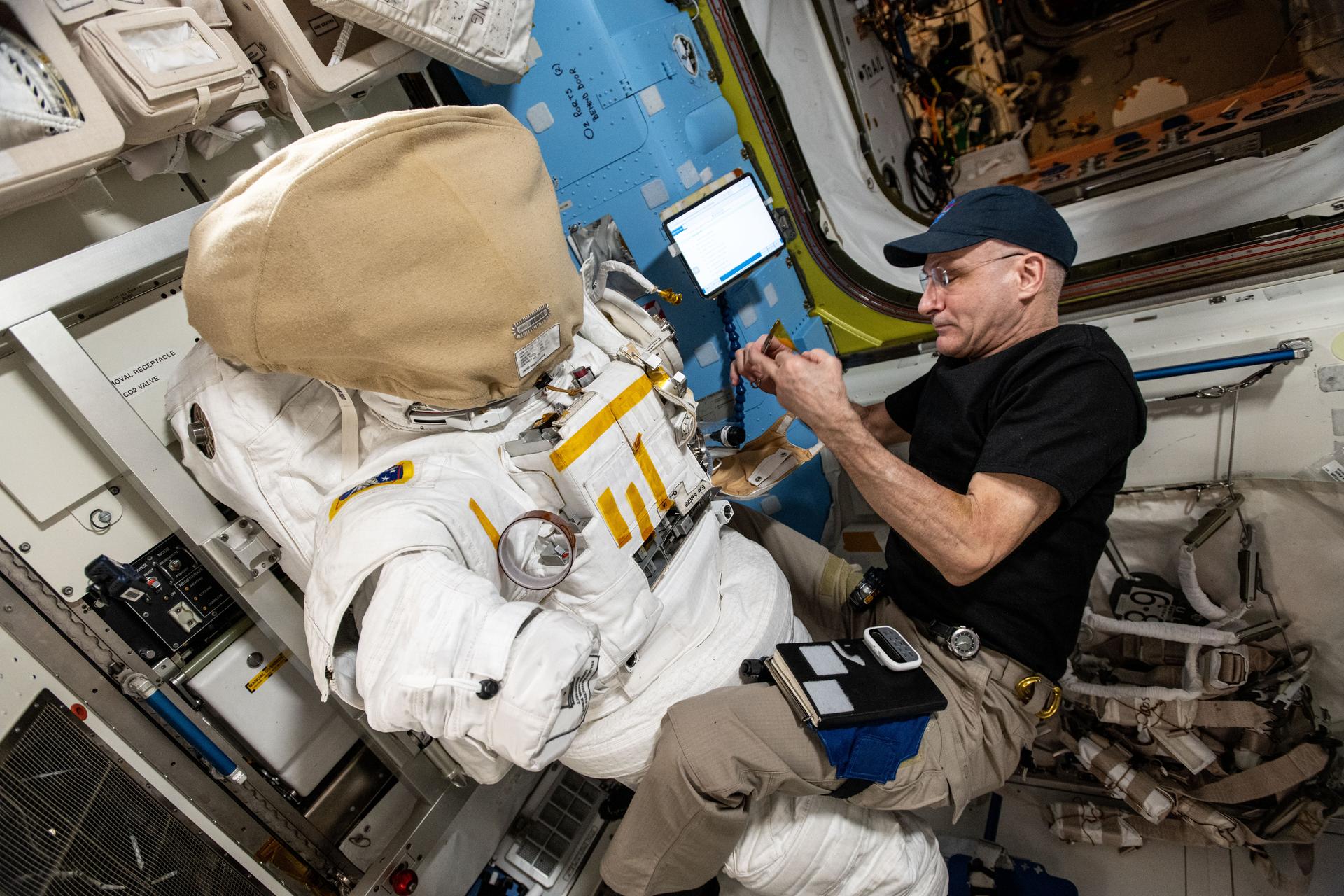Spacesuit checks and breath and blood circulation studies wrapped up the week for the Expedition 72 crew aboard the International Space Station. Meanwhile, three new crewmates are getting used to life in space while another trio is preparing to return to Earth.
NASA Flight Engineers Anne McClain and Nichole Ayers worked throughout Friday inside the Quest airlock installing display and control modules on a pair of spacesuits. The liquid crystal electronics gear features controllers and displays the operational status of the spacesuit. Next, NASA Flight Engineers Jonny Kim and Don Pettit reviewed procedures to ensure the spacesuits are ready to wear and the necessary suit hardware is installed.
Kim has been in space less than a week having arrived aboard the Soyuz MS-27 spacecraft on April 8 with Roscosmos cosmonauts Sergey Ryzhikov and Alexey Zubritsky. The trio has been getting used to life in weightlessness, learning how to operate space station systems, and rapidly getting to work on standard maintenance and research tasks.
Kim spent a portion of Friday installing orbital plumbing gear and transferring fluids in the Tranquility module. Ryzhikov and Zubritsky were back together at the end of the week working on two different space biology experiments. The pair first explored how microgravity affects their breathing rate. Next, the two cosmonauts wore sensors on their forehead, fingers, and toes measuring how their blood circulates in space.
Pettit is turning his attention to his upcoming departure with station Commander Alexey Ovchinin and Flight Engineer Ivan Vagner who have been aboard the station since Sept. 11, 2024. Pettit is gradually handing over his responsibilities to his new crewmates and spent a few moments on Friday training them how to use the advanced resistive exercise device. Ovchinin and Vagner practiced on a computer the techniques they will use when they into Earth’s atmosphere inside the Soyuz MS-26 spacecraft. The threesome will undock aboard the Soyuz from the Rassvet module and land in Kazakhstan on April 19 ending the Expedition 72 mission.
Pettit had spent the first part of Friday studying how water, liquid salt, and olive oil droplets transition from a frozen state to a liquid state in microgravity for a student experiment. He then scanned JAXA (Japan Aerospace Exploration Agency) astronaut Takuya Onishi’s neck, shoulder, and leg veins using the Ultrasound 2 device to understand how his body is adapting to space.
Ovchinin and Vagner also partnered with Roscosmos Flight Engineer Kirill Peskov and tested the lower body negative pressure suit that may pull body fluids toward the feet and prevent space-caused head and eye pressure. The specialized suit may also help crews quickly readjust to Earth’s gravity after living in space for months or years at a time.
Learn more about station activities by following the space station blog, @space_station and @ISS_Research on X, as well as the ISS Facebook and ISS Instagram accounts.
Get the latest from NASA delivered every week. Subscribe here: https://www.nasa.gov/subscribe


